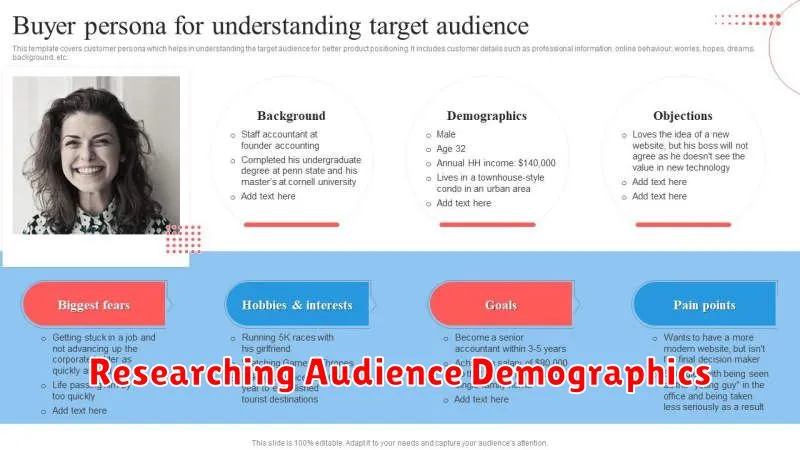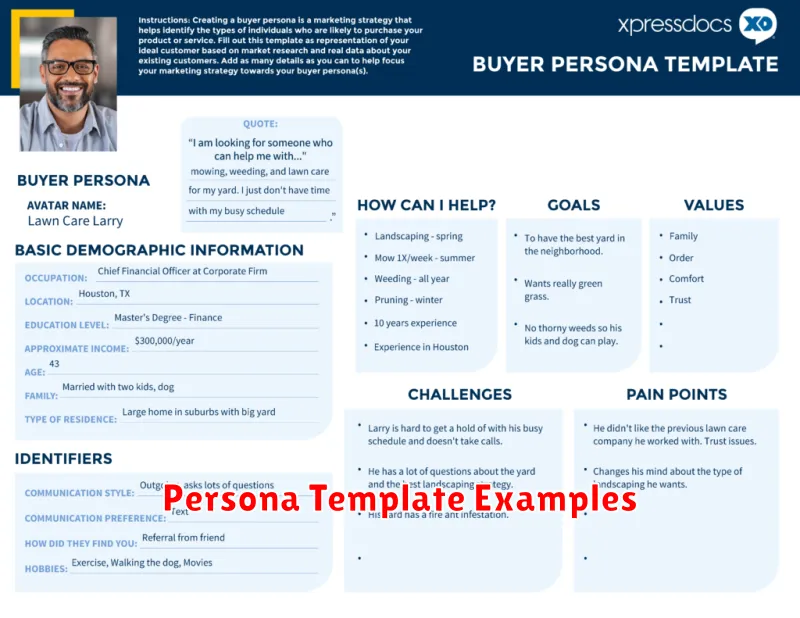In today’s competitive market, understanding your target audience is crucial for effective marketing. Creating buyer personas provides a detailed representation of your ideal customers, allowing you to tailor your marketing efforts for better targeting. By developing comprehensive buyer personas, you can gain valuable insights into their demographics, psychographics, motivations, and pain points, which are essential for crafting resonant messaging and optimizing your targeting strategies.
This article will guide you through the process of creating effective buyer personas that will empower you to reach the right audience with the right message at the right time. By understanding your customers’ needs, preferences, and behaviors, you can refine your targeting and improve your marketing ROI. Learn how to craft detailed buyer personas that will enable you to develop highly targeted marketing campaigns that resonate with your ideal customers, ultimately driving conversions and boosting your bottom line. This comprehensive guide provides the knowledge and tools you need to achieve better targeting through effective buyer persona development.
What is a Buyer Persona?
A buyer persona is a semi-fictional representation of your ideal customer. It’s based on market research and real data about your existing and potential customers.
Instead of targeting broad demographics, buyer personas help you personalize your marketing for specific customer types. This focused approach leads to more effective marketing campaigns by addressing the specific needs, motivations, and pain points of your target audience.
A well-defined buyer persona includes details such as:
- Demographics: Age, gender, location, education, income, etc.
- Psychographics: Values, interests, lifestyle, personality, etc.
- Professional Background: Job title, industry, company size, career goals, etc.
- Goals and Challenges: What are they trying to achieve? What obstacles are they facing?
- Buying Behavior: How do they research and make purchasing decisions?
Researching Audience Demographics

Demographic research forms the foundational layer of understanding your target audience. It provides quantifiable data that helps paint a clear picture of your potential customers.
Key demographic information to gather includes:
- Age: Understanding the age range helps tailor messaging and channel selection.
- Gender: While not always a defining factor, gender can influence purchasing decisions and preferences.
- Location: Geographic location informs content relevance, product availability, and marketing strategies.
- Income Level: This data helps determine pricing strategies and product positioning.
- Education Level: Education influences communication style and information processing.
- Occupation: Understanding occupation provides insights into daily routines, needs, and challenges.
- Family Status: Marital status and family size can significantly impact purchasing decisions.
Gathering this data can be accomplished through various methods, including surveys, market research reports, and analyzing website analytics.
Identifying Pain Points and Goals
A crucial step in creating effective buyer personas involves pinpointing their pain points and goals. Understanding these aspects allows you to tailor your marketing efforts and product development to directly address their needs and desires. Pain points represent the challenges, problems, or frustrations your target audience faces. Goals, on the other hand, represent what they hope to achieve or the desired outcomes they seek.
Begin by identifying the specific challenges your persona faces related to your industry or product. Consider what obstacles prevent them from achieving their objectives. These pain points can be practical, emotional, or financial. Next, determine the goals your persona aims to accomplish. These could include increased efficiency, cost savings, professional advancement, or personal fulfillment. Clearly defining these elements provides valuable insights for crafting targeted and resonant messaging.
Persona Template Examples

Examining persona templates can be beneficial in guiding your persona development process. Here are a few examples to illustrate different approaches:
Simple Persona Template
This template focuses on the core elements of a persona. It’s ideal for those starting with persona development.
| Element | Description |
|---|---|
| Name | A fictional name representing the persona. |
| Demographics | Age, location, occupation, income level, education, etc. |
| Goals | What they want to achieve. |
| Pain Points | Their challenges and frustrations. |
Detailed Persona Template
This template provides a more in-depth view of the persona, including psychographics and technological proficiency.
- Background: Personal and professional history.
- Values: What they believe in and prioritize.
- Tech Savviness: Comfort level with technology.
- Buying Behavior: How they make purchasing decisions.
Using Personas in Content Strategy
Once your buyer personas are defined, they become powerful tools for shaping your content strategy. Content strategy should directly address the needs, pain points, and motivations of your target audience, as represented by your personas.
Consider how your personas consume information. Do they prefer short-form videos, long-form blog posts, or interactive infographics? Tailoring your content format to their preferences increases engagement.
Content topics should also be persona-driven. What questions do your personas have? What information are they seeking? By aligning your content with their interests, you establish your brand as a valuable resource.
Finally, remember the customer journey. Different personas will be at different stages. Ensure you have content that addresses each stage, from awareness to decision-making.
Updating Personas Over Time
Your buyer personas are not static. They evolve as your business grows, market trends shift, and customer behavior changes. Regularly updating your personas is essential to maintaining their accuracy and relevance.
How often should you update your personas? A good rule of thumb is to review and refresh them every six to twelve months. However, certain triggers may warrant more frequent updates.
- Significant product or service changes: If you launch a new product or significantly alter an existing offering, your target audience might shift.
- Market disruptions: New competitors, emerging technologies, or economic changes can influence customer behavior and preferences.
- New data insights: Analyzing website analytics, customer feedback, and sales data can reveal new patterns and insights into your audience.
Updating your personas involves revisiting your research and data collection methods. Interview existing customers and conduct surveys to understand how their needs and challenges have changed. Analyze current market trends and competitive landscapes to ensure your personas remain aligned with the current reality.

